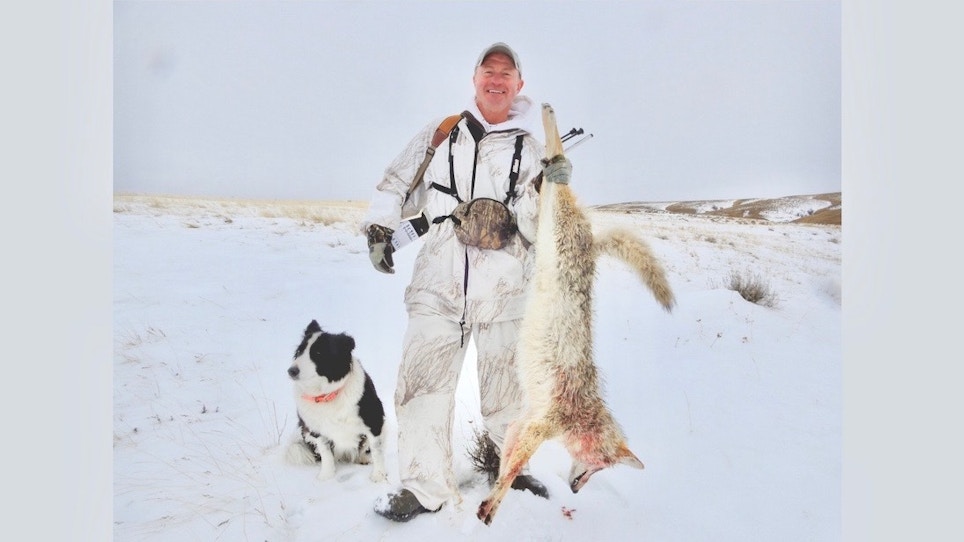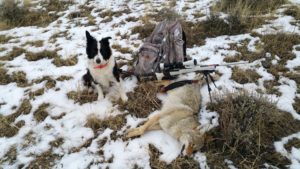Coyote hunting can be done with a minimalist approach or, as some hunters prefer, a "take it all and the kitchen sink" approach so they don't forget anything.
Sometimes, though, it may be best to pare, be lightweight and be able to move more stealthily or quickly with just a few items. Veteran predator hunter and Predator Xtreme contributor Mark Kayser provides his best tips for coyote hunting gear.
Trim your weight
You may have made a New Year’s resolution to lose weight, but have you considered trimming the weight and contents of your predator pack?
As I age, my back reminds me of all the 100-plus-pound backpack loads of deboned elk I should have made smaller. That and the fact that public-land coyotes I chase seem to go deeper into the public-land abyss has me rethinking how much gear I take on those long-haul, cross-country hikes.
Leaving out of a trailhead the other morning for a multi-mile hike had me dumping gear at the last minute. Fortunately, my hunch was right since a pack of vocal coyotes lured me more than two miles into some rugged canyons. On the way out I was one coyote pelt heavy and grateful for leaving some of my gear behind.
Here is a list of some of the items I either leave behind or replace.
RELATED: How to Hunt Coyotes Like a Pro
Calls
That electronic caller is bulky and adds extra pounds in your pack depending on the model. I have several models and none are less than two pounds. Some even weigh more than three.
When I want to go light I simply grab several hand calls that weigh less than a pound, yet still give me plenty of variety in sounds. In February you can lighten the load even more since the coyote breeding season is in play. A megaphone and diaphragm call are all you need to howl in a lonely coyote. Send several lone howls across your hunting area in February and it can be just as effective as pushing multiple buttons on your calls.
Optics
If you’re hunting thick country such as overgrown timber, wetlands or mesquite brush, you may be better off to leave the binocular or rangefinder at home. Using your eyes may prove to be just as effective as scanning with optics. Plus, ranges likely will be so short that you could even get away with a shotgun.
For much of the country I hunt I’ve switched to a binocular that includes a rangefinder. The weight savings is nominal, but the idea of toting one less piece of gear into the field is worth the swap. I have reduced my equipment list by one article, and having both items in one configuration allows me to scan and range the landscape without switching optics if I do spy a coyote. Nikon’s LaserForce 10x42 has been spitting out precise coyote distances for me this winter along with clarity while glassing.
RELATED: Which Coyote Hunting Riflescope is Right for You?
Rifle
You can go crazy when it comes to lightweight rifles. It only takes seconds of online surfing to find models that weigh less than five pounds. Of course, those same lightweight models typically come with a heavyweight price.
To keep within budget look for models that, when fitted with a riflescope, weigh less than 10 pounds. When I feel like a long hike I routinely switch out my Bergara HMR rifle that weights more than 10 pounds for the lighter B-14. When fitted with a riflescope, the B-14 is just a tad more than 8 pounds.
The same goes with ammunition. Think about all the times you went coyote hunting and needed more than four or five cartridges. I generally fill the magazine and then keep five extras in case of a coyote war.
Shooting aids
If you know the country well you can also skip on one shooting aid. I always have a bipod attached to my rifle because of my prone-hunting preference. Even so I typically have a pair of shooting sticks strapped to my pack. If I believe I won’t need the sticks I’ll leave them at the truck, especially if I’ve been to the stand before.
You also can unscrew you bipods and just go with shooting sticks. If you really want to cut weight, use your pack as a shooting rest and leave the bipod and sticks at the trailhead.
RELATED: Hunt and Kill More Eastern Coyotes
Clothing
Finally, depending on the weather forecast and the terrain you need navigate, you may want to lighten your clothing load. Lightweight boot options and lightweight clothing should be considered when miles are in the game plan.
Swap out wool for polyester or down, and consider light hiking boots if the temperatures allow. You can shave a lot of weight simply by going with fewer clothing options. Remember, too, that hiking keeps you warm. The only time you’ll be stationary is the 30 minutes or so you’re on stand.
If you have additional ideas on how to shave weight during your predator hunts, please share them in the comments section below. Oh yeah, good luck shedding those New Year’s resolution pounds, too!







